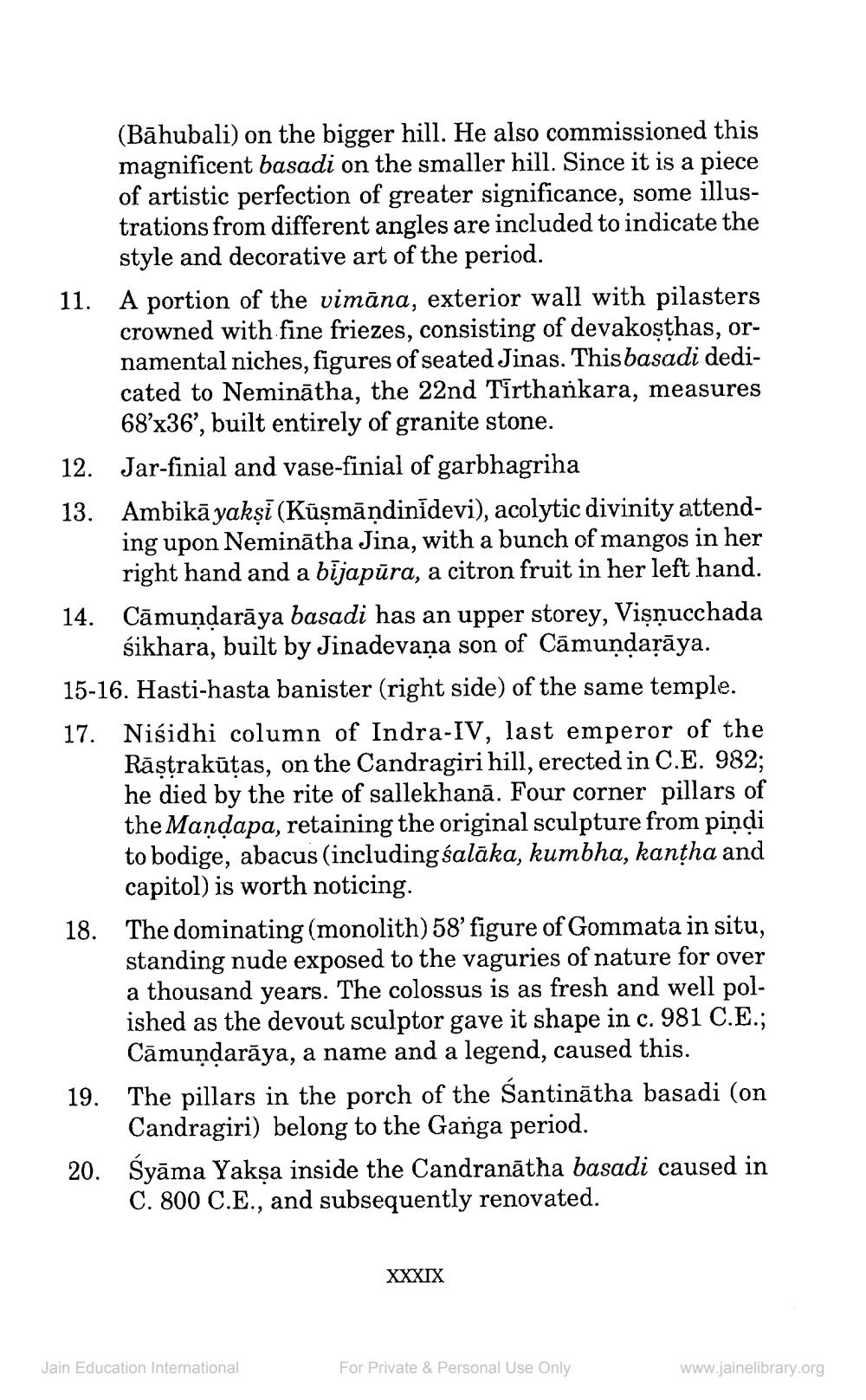________________
(Bāhubali) on the bigger hill. He also commissioned this magnificent basadi on the smaller hill. Since it is a piece of artistic perfection of greater significance, some illustrations from different angles are included to indicate the
style and decorative art of the period. 11. A portion of the vimāna, exterior wall with pilasters
crowned with fine friezes, consisting of devakoșthas, ornamental niches, figures of seated Jinas. This basadi dedicated to Neminātha, the 22nd Tirthankara, measures
68x36', built entirely of granite stone. 12. Jar-finial and vase-finial of garbhagriha 13. Ambikā yaksi (Küsmāņdinidevi), acolytic divinity attend
ing upon Neminātha Jina, with a bunch of mangos in her
right hand and a bijapūra, a citron fruit in her left hand. 14. Cāmundarāya basadi has an upper storey, Vişnucchada
śikhara, built by Jinadevana son of Cāmundarāya. 15-16. Hasti-hasta banister (right side) of the same temple. 17. Nisidhi column of Indra-IV, last emperor of the
Rāstrakūtas, on the Candragiri hill, erected in C.E. 982; he died by the rite of sallekhanā. Four corner pillars of the Mandapa, retaining the original sculpture from pindi to bodige, abacus (including salāka, kumbha, kantha and
capitol) is worth noticing. 18. The dominating (monolith) 58' figure of Gommata in situ,
standing nude exposed to the vaguries of nature for over a thousand years. The colossus is as fresh and well polished as the devout sculptor gave it shape in c. 981 C.E.;
Cāmundarāya, a name and a legend, caused this. 19. The pillars in the porch of the Santinātha basadi (on
Candragiri) belong to the Ganga period. 20. Syāma Yaksa inside the Candranātha basadi caused in
C. 800 C.E., and subsequently renovated.
XXXIX
Jain Education International
For Private & Personal Use Only
www.jainelibrary.org




